Red Hat Insights is a managed service included with almost every Red Hat Enterprise Linux (RHEL) subscription that continuously analyzes platforms and applications to help you maintain your hybrid cloud environment. Red Hat Insights uses predictive analytics and deep domain expertise to reduce the time required to perform complex operational tasks from hours to minutes. This includes identifying security and performance risks, tracking licenses and managing costs.
Insights remediations generates Ansible Playbooks that remediate issues discovered by Red Hat Insights. The remediations service interacts with several other Insights services like inventory, advisor, patch, compliance and vulnerability. We've implemented several improvements to enhance the user experience:
- A tooltip provides information about why you can or cannot execute a playbook when you hover over the Execute playbook button on the remediations page.
- A compliance scan (
insights-client –compliance) has been added to the playbook when there are compliance issues included in the remediation playbook. - A connection status column has been added in the Systems tab when you’re viewing a specific remediation playbook that indicates the status of your system.
- Remediation playbooks are protected from being created with existing or blank names.
In this article, we cover each of these improvements to help you understand how they can improve your experience with Insights remediations.
Informational tooltip on the Execute Playbook button
A tooltip now appears when you hover over the Execute playbook button on the remediations detail page. This popup displays a remediations readiness check that includes three checks that must pass in order to execute the playbook.
One of the figures below shows an example of only two-thirds of the checks passing, resulting in a disabled Execute playbook button.
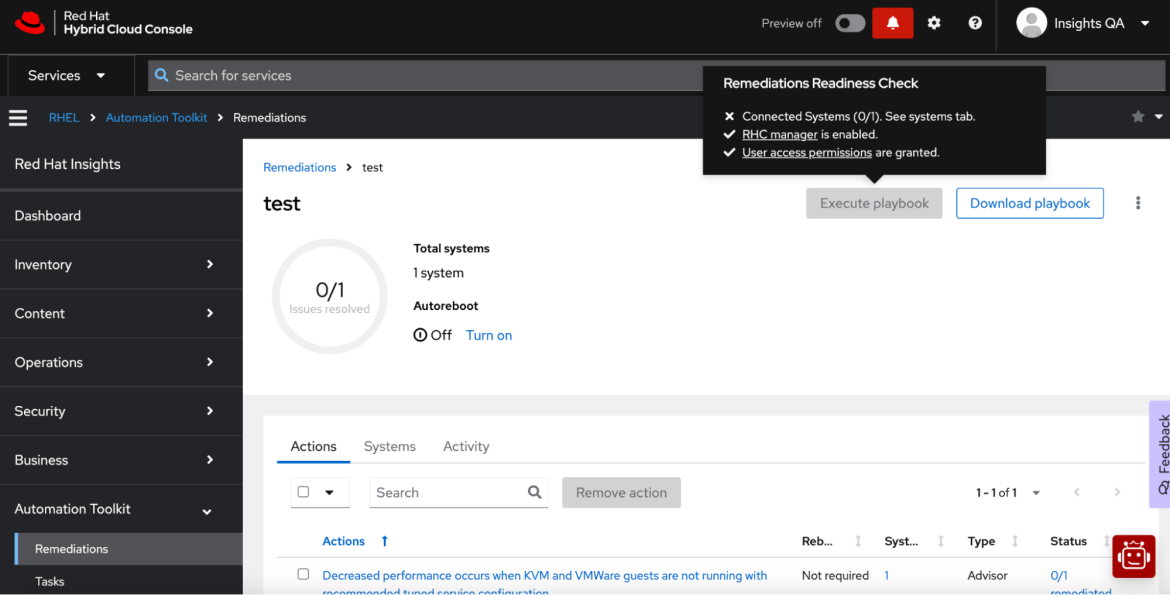
Disabled “Execute playbook” button with only ⅔ of readiness check passing
In this example, you must ensure that the system is connected by navigating to the Systems tab and making the necessary adjustments. The next figure shows an example of all three checks passing, resulting in the Execute playbook button being enabled.
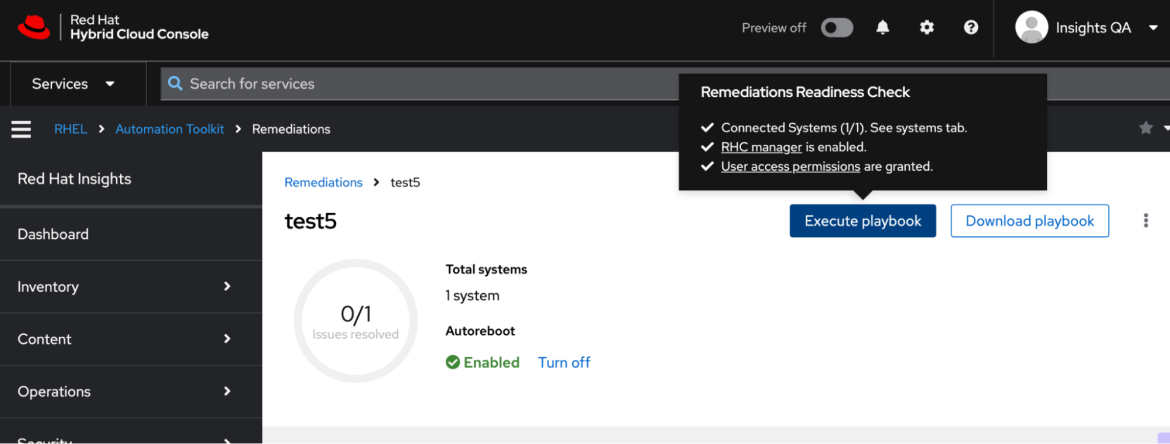
Enabled “Execute playbook” button with fully passing readiness check
Automatic compliance scan for remediations with compliance issues
The compliance scan (insights-client –compliance) is now automatically added to a remediation playbook containing compliance issues. Previously, the compliance scan had to be done manually after the remediation. The following figure shows the task that gets added to the remediation playbook when there is a compliance issue included in the playbook.This change saves you time by taking care of that extra step for you.
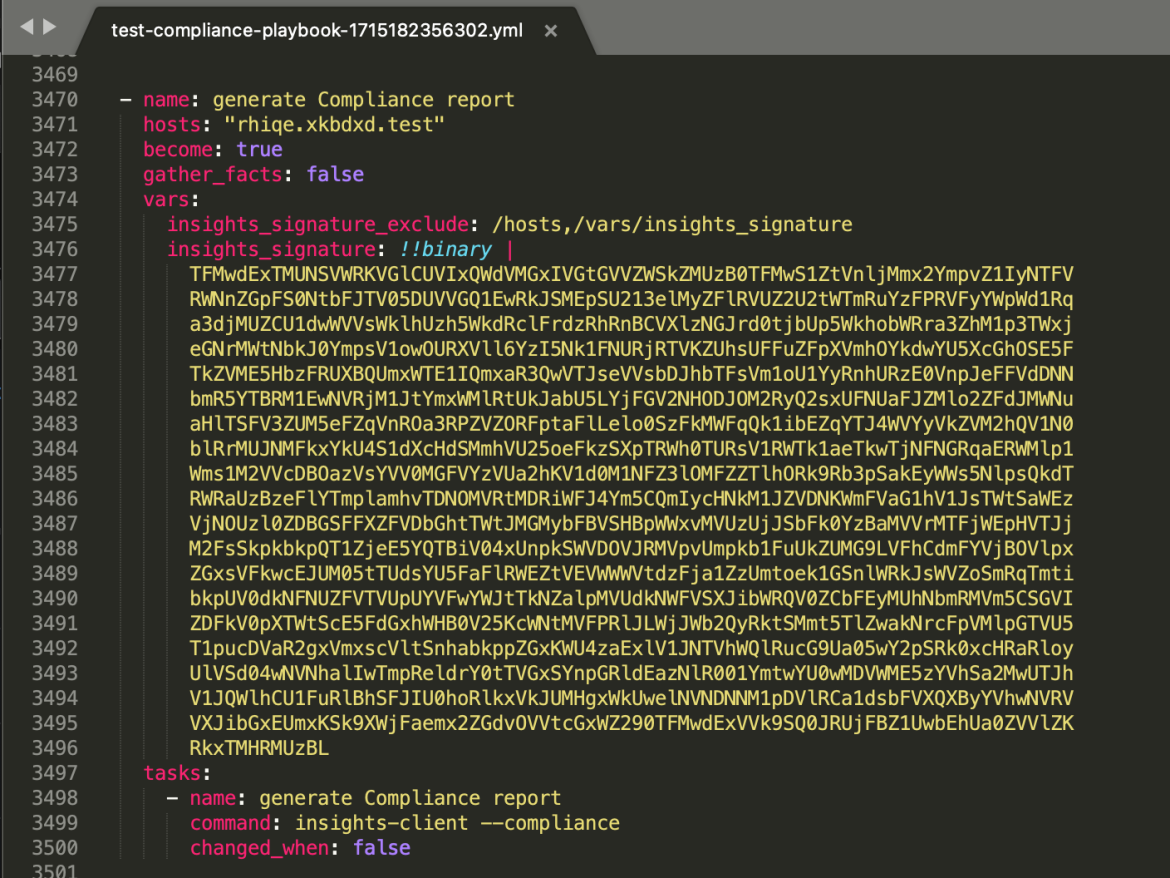
Task that will be added to remediation playbook to generate a compliance report
Connection status column on systems table
In addition to the new popover for the Execute playbook button, there's a new connection status column in the table of the systems tab on the remediations page. This column displays the connection status for all systems included in the remediation playbook. The possible connection statuses are: connected, disconnected, not configured or unknown. If the connection status is connected, then there is no popover message.
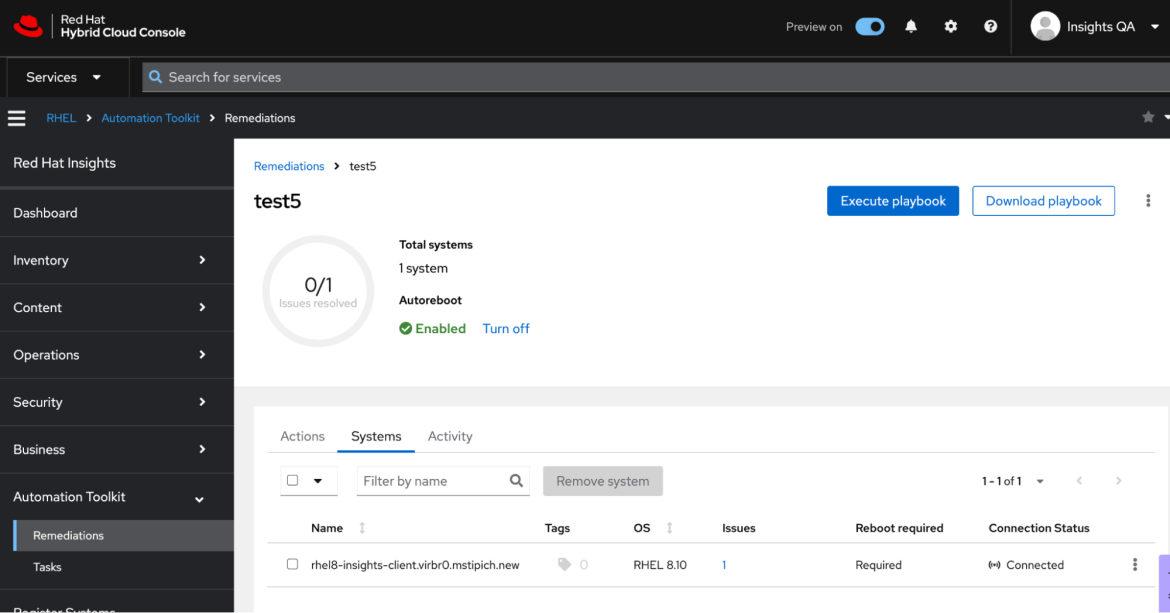
System with a ‘Connected’ connections status
If the connection status is disconnected, then there is a popover when you hover over the word disconnected, providing information depending on the system type (remote host configuration client or Red Hat Satellite).
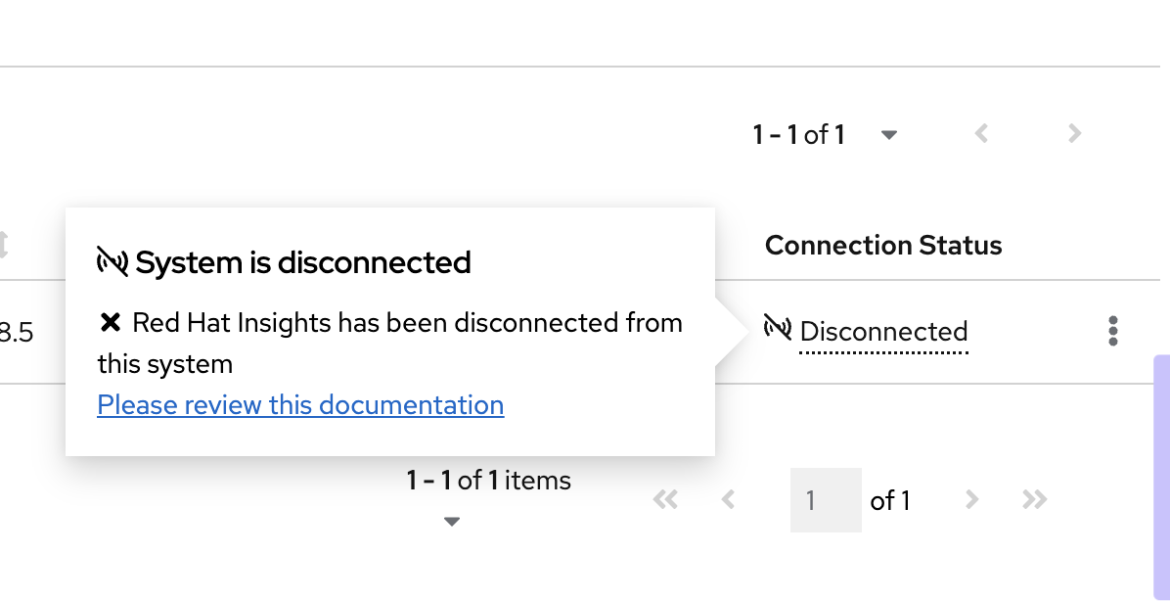
Popover message when connection status is ‘disconnected’ and system type is RHC client
The figure below shows the disconnected popover message when the system type is Red Hat Satellite.
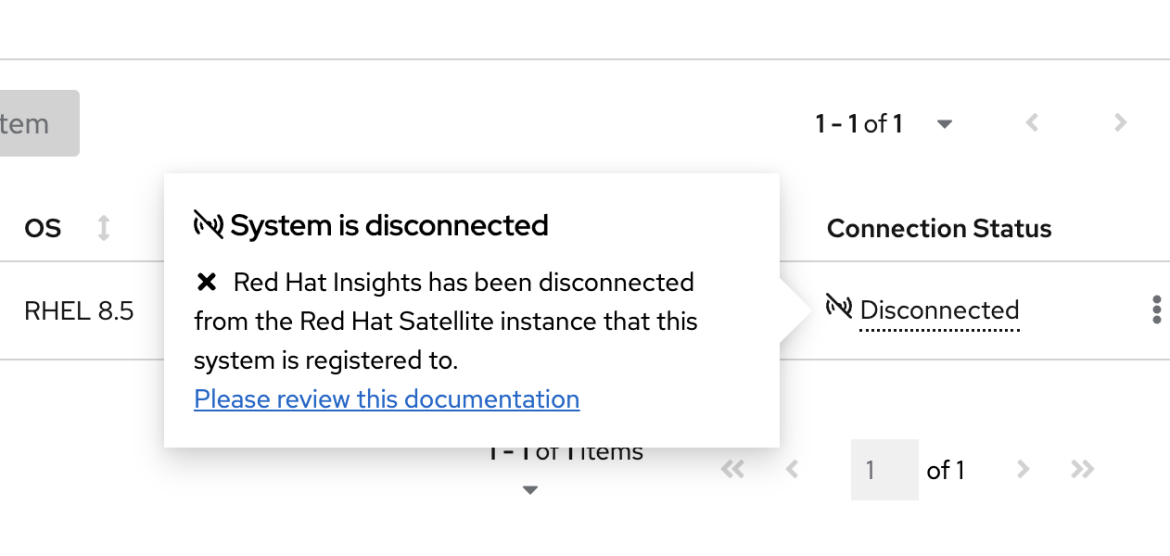
Popover message when connection status is ‘disconnected’ and system type is Red Hat Satellite
If the status is not configured, a popover is available with information on how to connect the system or the Red Hat Satellite instance to Red Hat Insights.
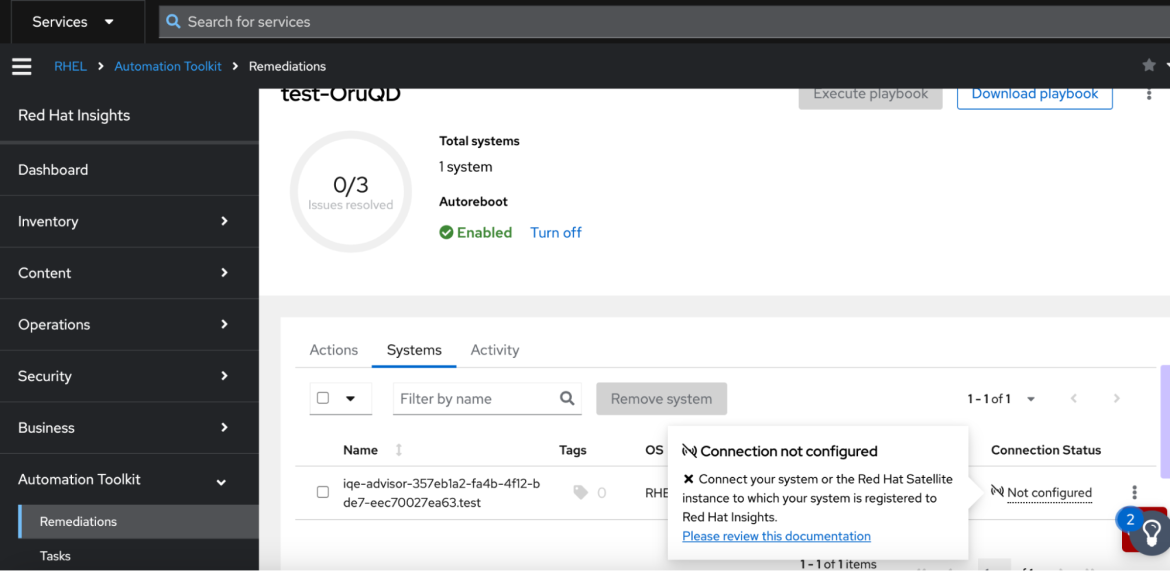
Popover message when connection status is ‘not configured’
Finally, if the connection status is unknown, there is a popover when you hover over the word unknown with more information on whether this is due to a Role Based Access Control (RBAC) or RHC permission issue.
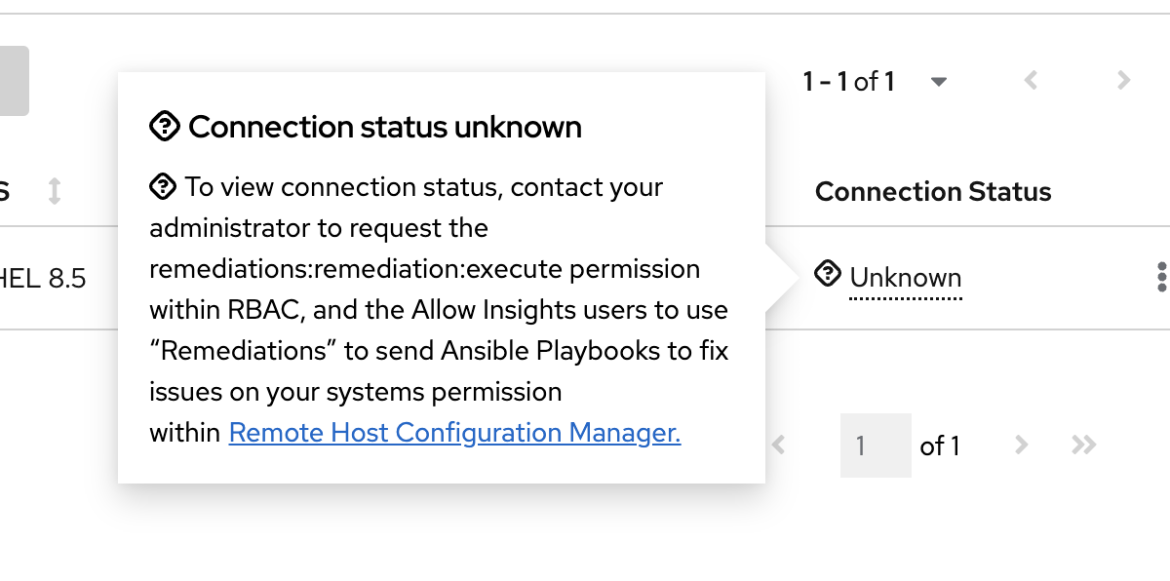
Popover message when connection status is ‘Unknown’
This change helps you understand the connection status for each system. When there is a connectivity issue, it helps you to identify which system needs to be reviewed and what needs to be done to get it working again.
No duplicate or blank remediation playbook names
It is no longer possible for two remediation playbooks within the same organization to use the same name. It's also not possible to create a remediation playbook with a blank name. Before this update, unnamed playbooks were automatically named “unnamed playbook”, which could result in duplicate remediation playbook names.
Now, when you attempt to create or update a remediation playbook using a name that’s already in use, you're prompted to edit the name.
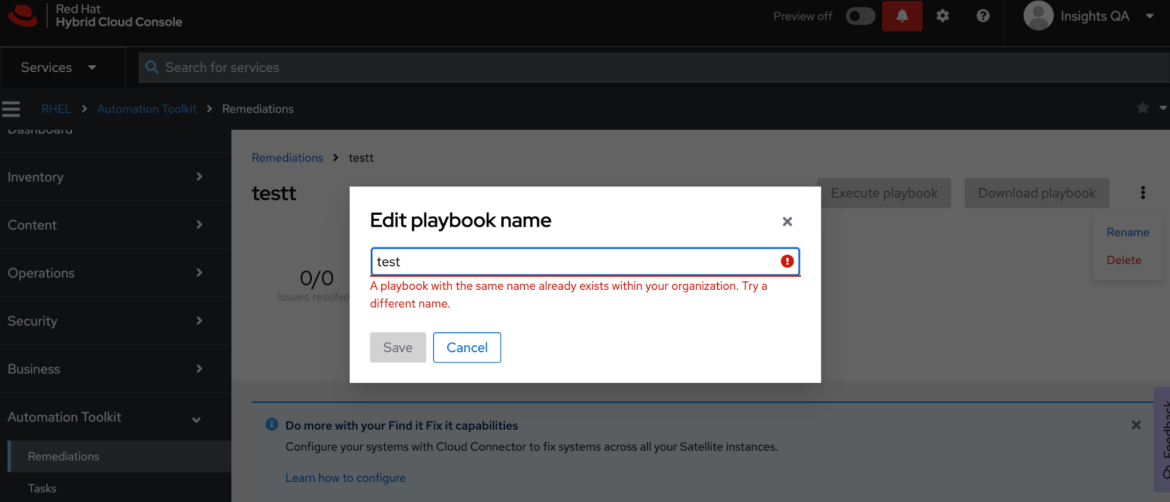
Error message displayed when you attempt to update remediation playbook using a name that already exists within the organization
When you attempt to create a new remediation playbook with a blank name, the next button remains disabled until you provide a valid playbook name.
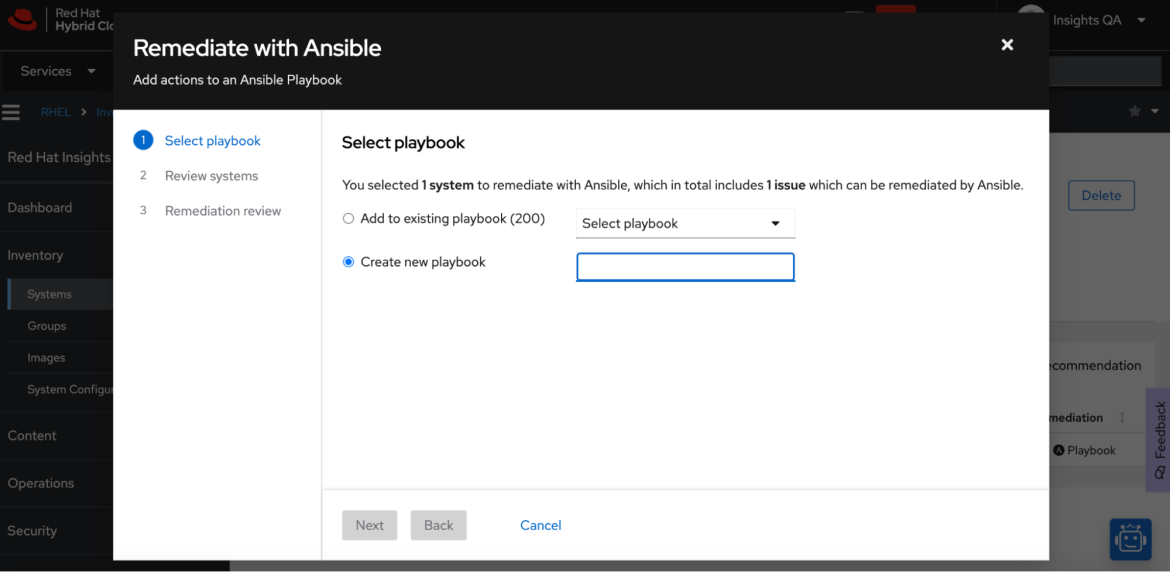
Disabled ‘next’ button when user attempts to create a remediation playbook with a blank name
Currently, you're only able to view remediation playbooks that you've created. In the future, you will be able to share a playbook with the entire organization. Requiring unique names is one way to reduce confusion when these upcoming changes occur.
New features
In this article, we’ve highlighted several Insights remediations improvements that provide an improved user experience. You can learn more about Red Hat Insights in these helpful articles:
- Extend Red Hat Insights client to execute custom automation
- Convert CentOS Linux to RHEL using Red Hat Insights
- Testing frameworks for images built via Insights image builder
Not using Insights remediations yet? Learn more and try it today.
About the author
Marley Stipich is a Software Engineer on the Insights Compliance team at Red Hat. Marley graduated from The Ohio State University in May 2020 with a degree in Computer Science and Engineering and has been working as a Software Engineer for over two years. She has a passion for solving complex problems and expressing her creativity through software development. Over the past two years, Stipich has expanded her technical experience in web development with skills in Ruby on Rails, Angular, React, JavaScript and HTML. She has also developed valuable communication and organizational skills and a keen attention to detail. In her free time, Marley enjoys exercising, reading, playing with her dog and spending time with her partner.
More like this
Browse by channel
Automation
The latest on IT automation that spans tech, teams, and environments
Artificial intelligence
Explore the platforms and partners building a faster path for AI
Cloud services
Get updates on our portfolio of managed cloud services
Security
Explore how we reduce risks across environments and technologies
Edge computing
Updates on the solutions that simplify infrastructure at the edge
Infrastructure
Stay up to date on the world’s leading enterprise Linux platform
Applications
The latest on our solutions to the toughest application challenges
Original shows
Entertaining stories from the makers and leaders in enterprise tech
Products
- Red Hat Enterprise Linux
- Red Hat OpenShift
- Red Hat Ansible Automation Platform
- Cloud services
- See all products
Tools
- Training and certification
- My account
- Customer support
- Developer resources
- Find a partner
- Red Hat Ecosystem Catalog
- Red Hat value calculator
- Documentation
Try, buy, & sell
Communicate
About Red Hat
We’re the world’s leading provider of enterprise open source solutions—including Linux, cloud, container, and Kubernetes. We deliver hardened solutions that make it easier for enterprises to work across platforms and environments, from the core datacenter to the network edge.
Select a language
Red Hat legal and privacy links
- About Red Hat
- Jobs
- Events
- Locations
- Contact Red Hat
- Red Hat Blog
- Diversity, equity, and inclusion
- Cool Stuff Store
- Red Hat Summit
